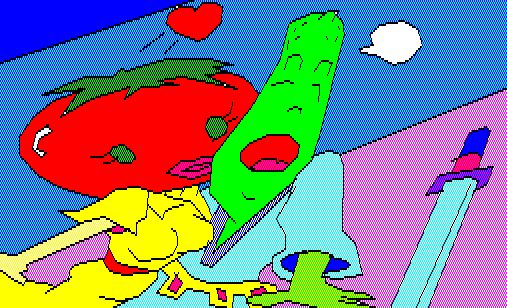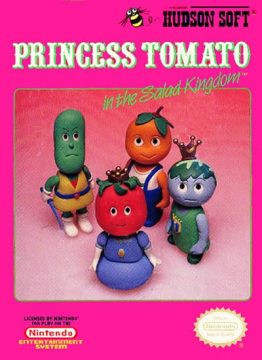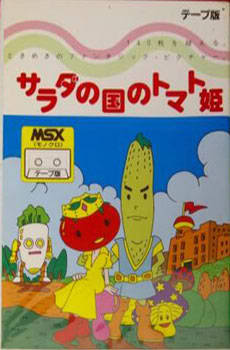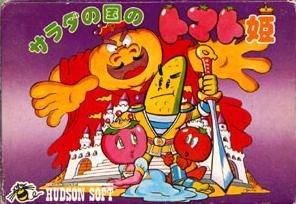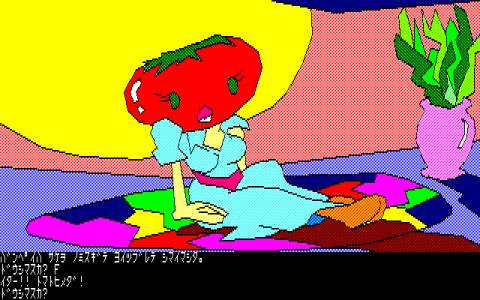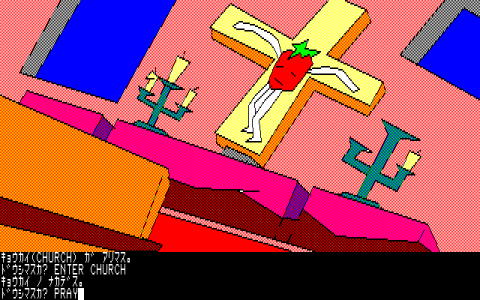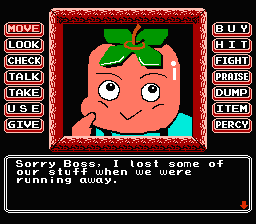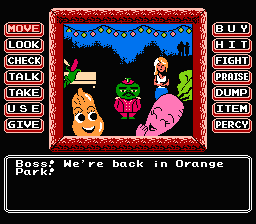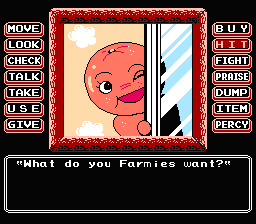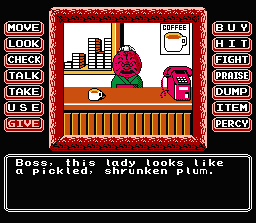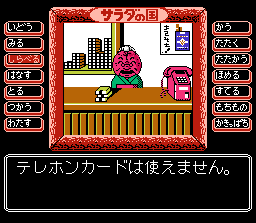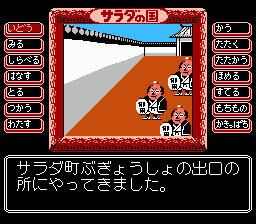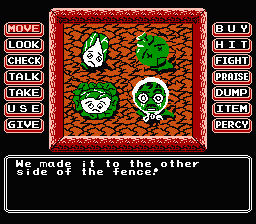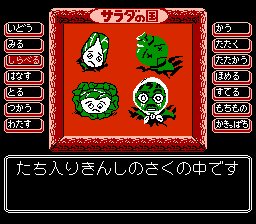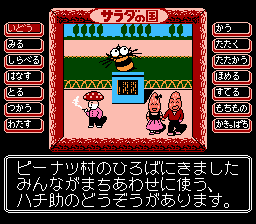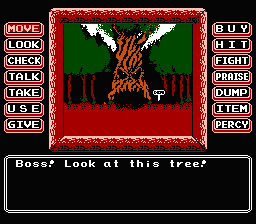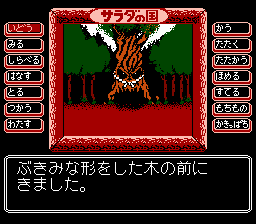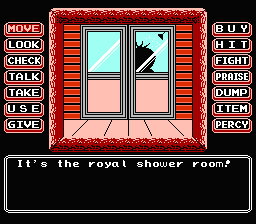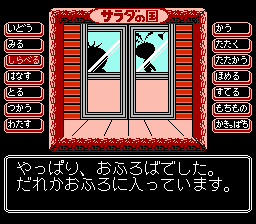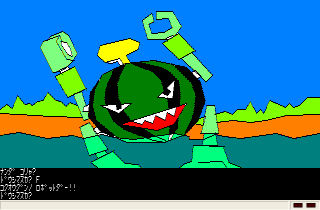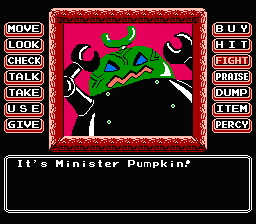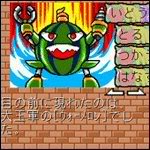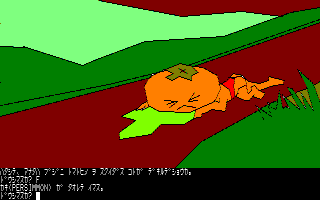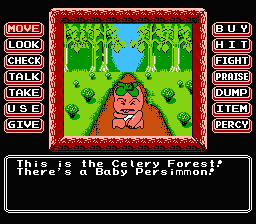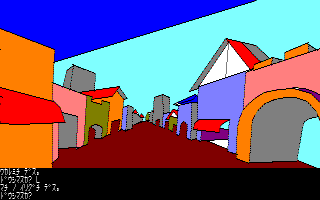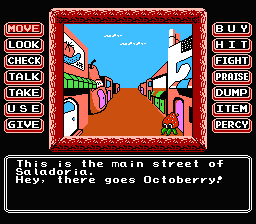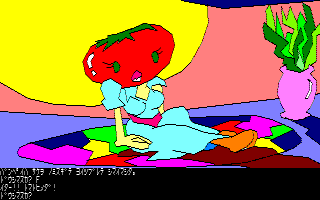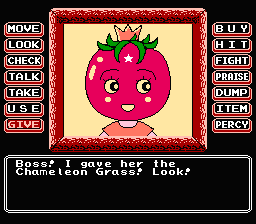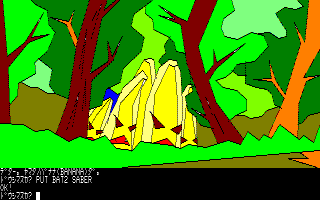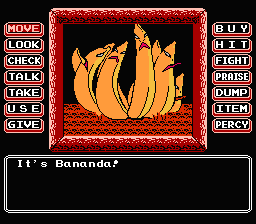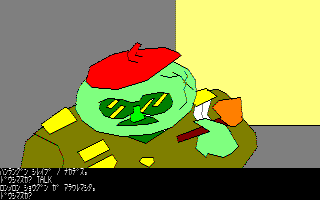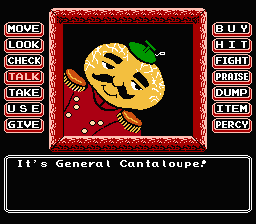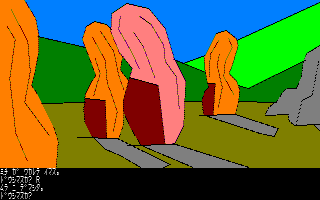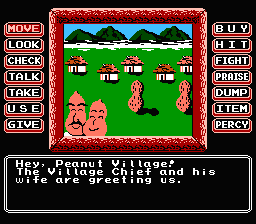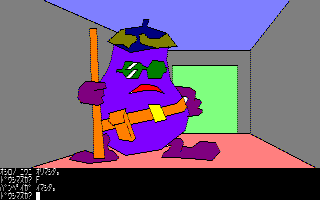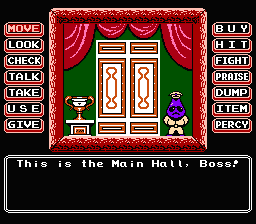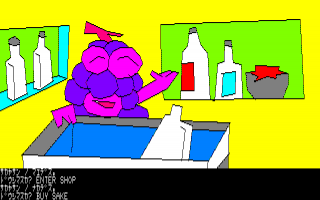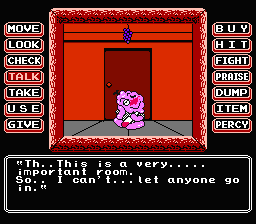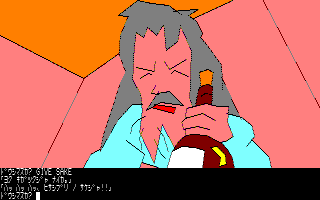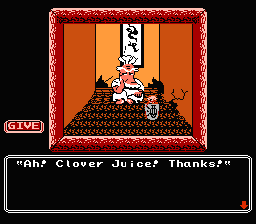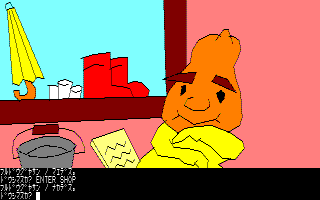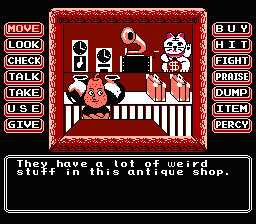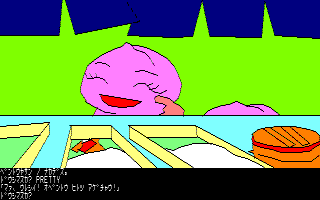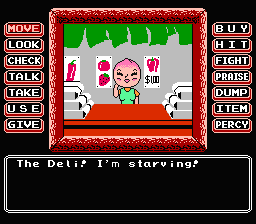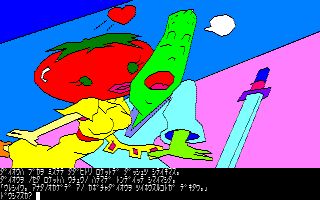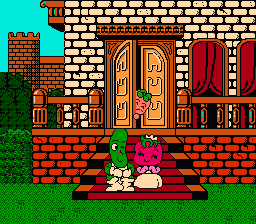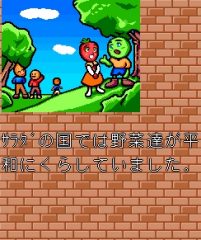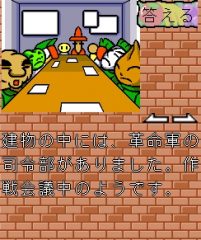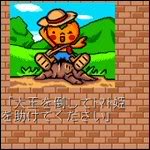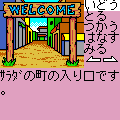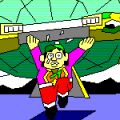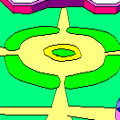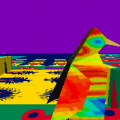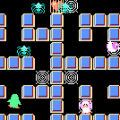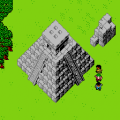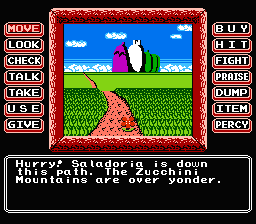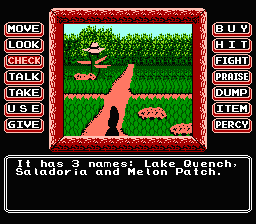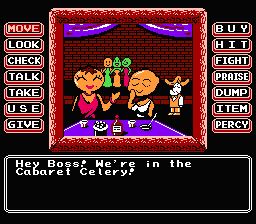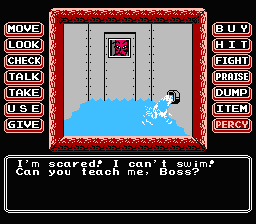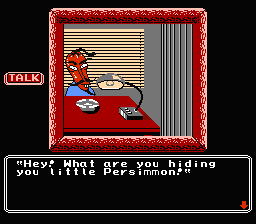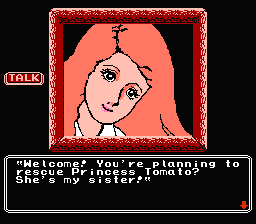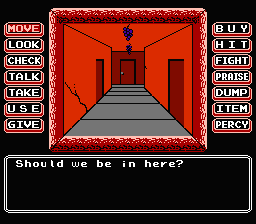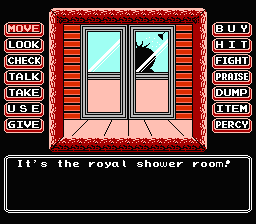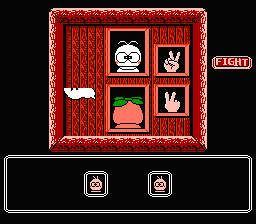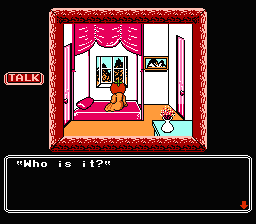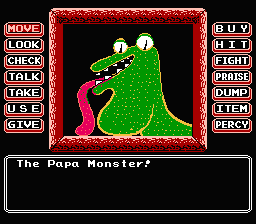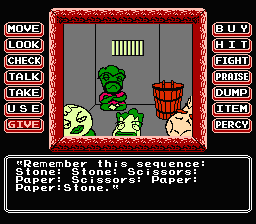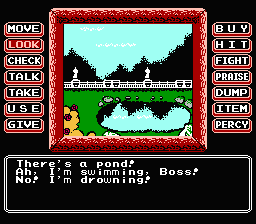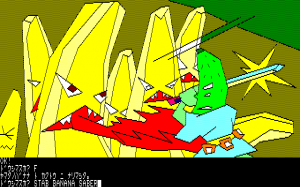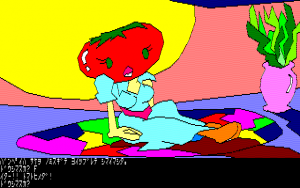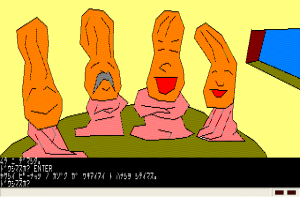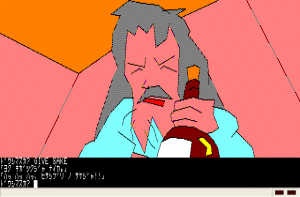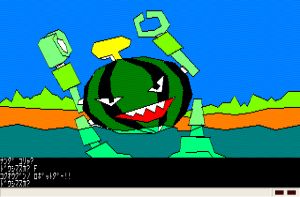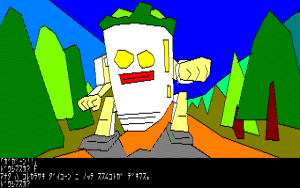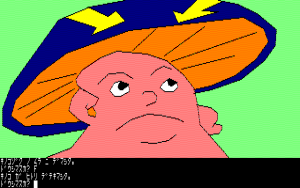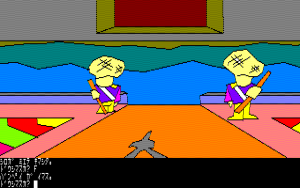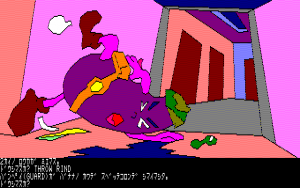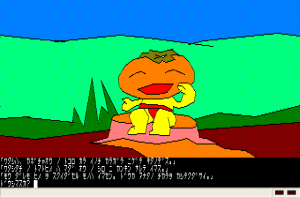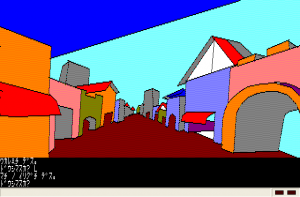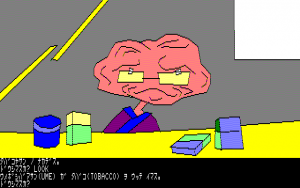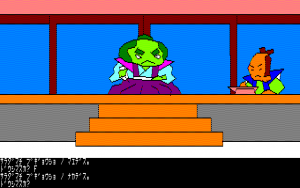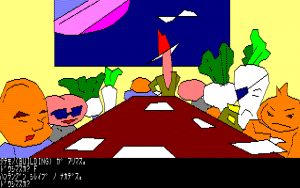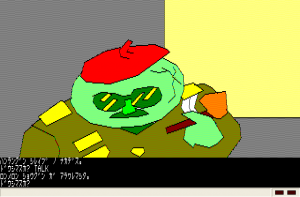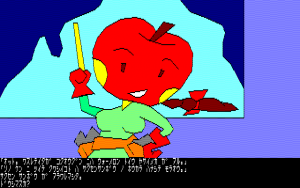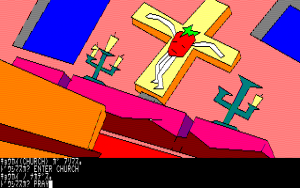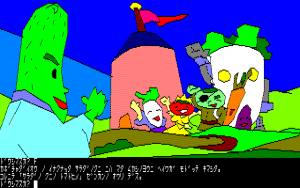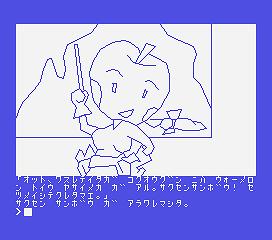Most early text adventures were developed in America, where the genre was practically invented. Naturally, as they began to be exported overseas, the local cultures began to take the concept and run off in their own direction. In Japan, Hudson’s were amongst the more interesting, if only because the guys developing their titles were certifiably insane. (See: Dezeni World, a cracked out take on Disney theme parks.) Their most well known is Salad no Kuni no Tomato-hime, translated as Princess Tomato in the Salad Kingdom – it was also their only adventure game to be translated into English. The Salad Kingdom, as one might expect, is populated almost entirely by anthropomorphic vegetables. As the story goes, the evil Minister Pumpkin kidnapped the beautiful Princess Tomato, causing her father, King Broccoli, to perish out of grief. And so, the kingdom’s greatest knight, Sir Cucumber, sets off on a journey to save her.
The game was first released on several Japanese home computers, including the Sharp X1, MSX, and PC-88. The PC-88 version is by far the best looking, with colorful, high resolution graphics. The artists at Hudson were totally brilliant, and while the angular lines make them look like fancy MS Paint drawings, there’s such a goofy sense of style that it’s utterly compelling. The most amusing are the ample bosoms stuck on the vegetable ladies, and the crucified strawberry in the church. Despite its age and although it’s restricted to a 16-color dithered palette, it’s still an incredibly bright, attractive game, and visually is leaps beyond most English text adventures of the time.
All user interaction in the computer release is handled through a text parser. While most of the text is in Japanese, input is understood in English text; the “look” command is kind enough to translate all objects into English so they can be easily interacted with. The parser is extremely basic though, and can’t even handle prepositions, so a command like “hit watermelon with tree” will need to be typed as “hit watermelon tree”. And strangely, while most English text adventures required that you use the cardinal directions for movement – (N)orth, (S)outh, (E)ast and (W)est – Hudson’s games instead use (F)orward, (B)ackward, (L)eft and (R)ight.
In 1988, Hudson ported Princess Tomato in the Salad Kingdom to the Famicom, which in turn was translated into English and released in 1991 for the Nintendo Entertainment System. It’s a near ground-up overhaul, drastically expanding the adventure while retaining a few core elements. The basic plot is the same, although in addition to rescuing the Princess, you also need to obtain the royal emblem, which has also been stolen. The text parser obviously wouldn’t work with a controller, so instead there are various commands on the side of the screen to move, use items, talk, and so forth. Due to the decreased resolution and memory space, the graphics have been entirely redrawn and squeezed into a tiny window in the middle of screen. While still goofy, they lack the colorful charm of the original drawings. You also can’t interact directly with the visuals, as all items you can interact with are listed at the bottom of the screen.
The story has been significantly overhauled, with a total of eight chapters versus four in the original. The first two areas are roughly the same, with a few new puzzles added in. One of the first characters you meet in both versions is an injured baby persimmon. In the computer version he just gives you some info, but in the NES version he’s named Percy and joins you, acting as a squire. In other words, he essentially takes on the role of Yasu from Portopia, that being a partner who relays information, since the protagonist is silent. He has his own command and is useful for puzzles, but mostly he just loses various (unneeded) items between chapter breaks and says lots of goofy stuff.
However, the story takes a drastic turn once you leave Saladoria. In the NES version, you end up getting captured and escaping from prison, and exploring a second town called Sopville while disguised as the enemy. It hits most of the same plot points as the computer version, like when you take command of a gigantic robot called the Dice-o-Matic and face off against a monstrous mechanical watermelon. You also need to destroy a squad of evil bananas, using a sword in the PC version and a peanut bomb in the NES version. The NES game adds even more weirder sequences, like when you meet Princess Tomato’s sister Lisa, who is inexplicably a human despite living in land of (and being related to) anathropomorphic vegetables. And in a rather creepy scene, you even end up spying on a nubile young ornage in the shower. The NES port also introduces three maze sequences, as well as combat sequences which take the form of Rocks-Paper-Scissor battles, here dubbed “Finger Wars”. While most of the additions in this port are welcome, these feel a bit too shoe-horned in, like the developers felt like a straight adventure game wasn’t meaty enough and it needed some light RPG elements.
There are a handful of small changes between the Japanese Famicom and American NES version. It’s mostly censorship, consisting of small graphical changes, such as changing a store that sells cigarettes into a coffee bar, and changing a liquor store in a juice shop. The shimenawa rope tied on one of the trees is also removed, since it’s related to Shinto culture and would not be understood to be Americans. Other minor graphical changes/improvements are also abound.
In 2004, a mobile version was released. Based on the Famicom version, it features improved graphics. It was also featured on the Hudson Best Collection Vol. 4: Nazotoki Collection for the Game Boy Advance, along with Nuts & Milk and Binary Land. It’s a straight emulation of the Famicom version. The NES version was also released on the Wii Virtual Console in 2010.
Compared to other NES adventures like Shadowgate and Deja Vu, Princess Tomato in the Salad Kingdom is fairly easy, especially since there’s no way to die or get stuck. There’s no battery save either, requiring that you use passwords. Even though the interface is a bit cumbersome, it’s a cute, quirky, and worthwhile game.
Links:
Gamespite Let’s Play Several pics taken from here.
Japan Adventure Attack
NES Player – Princess Tomato Prototype
Retro ADV Guide Full walkthrough for the PC version.
Regional Screenshot Comparisons
Screenshot Comparisons
